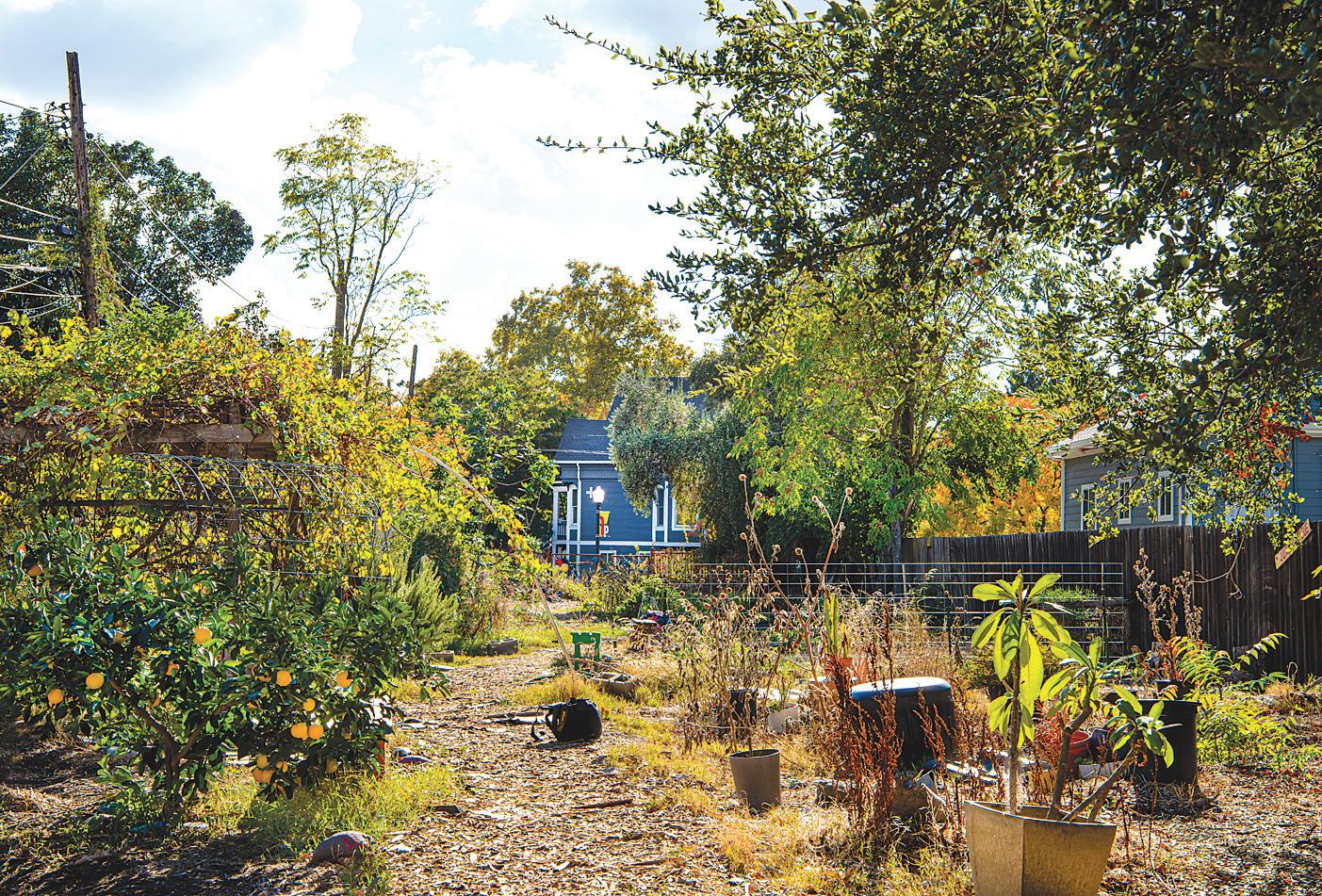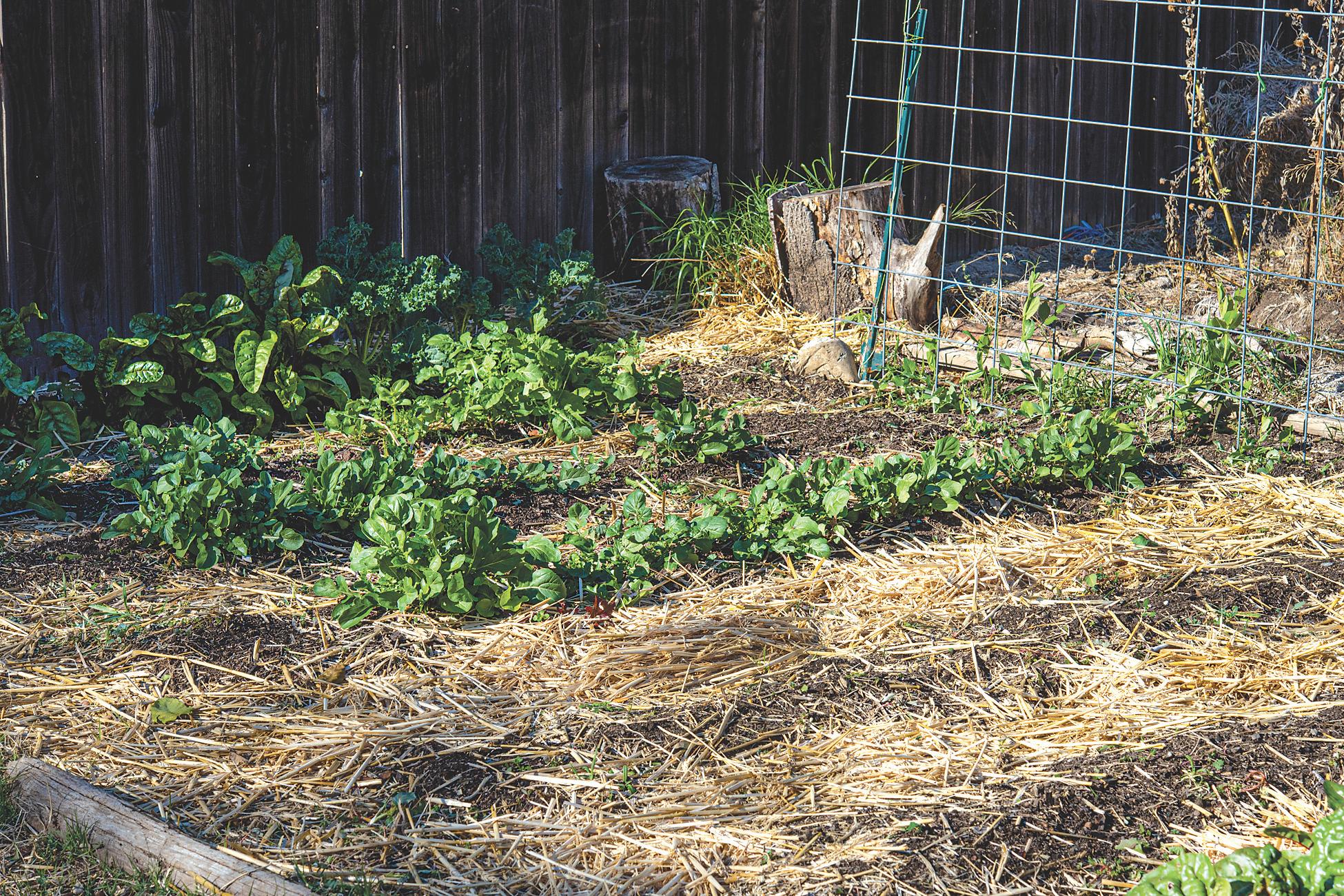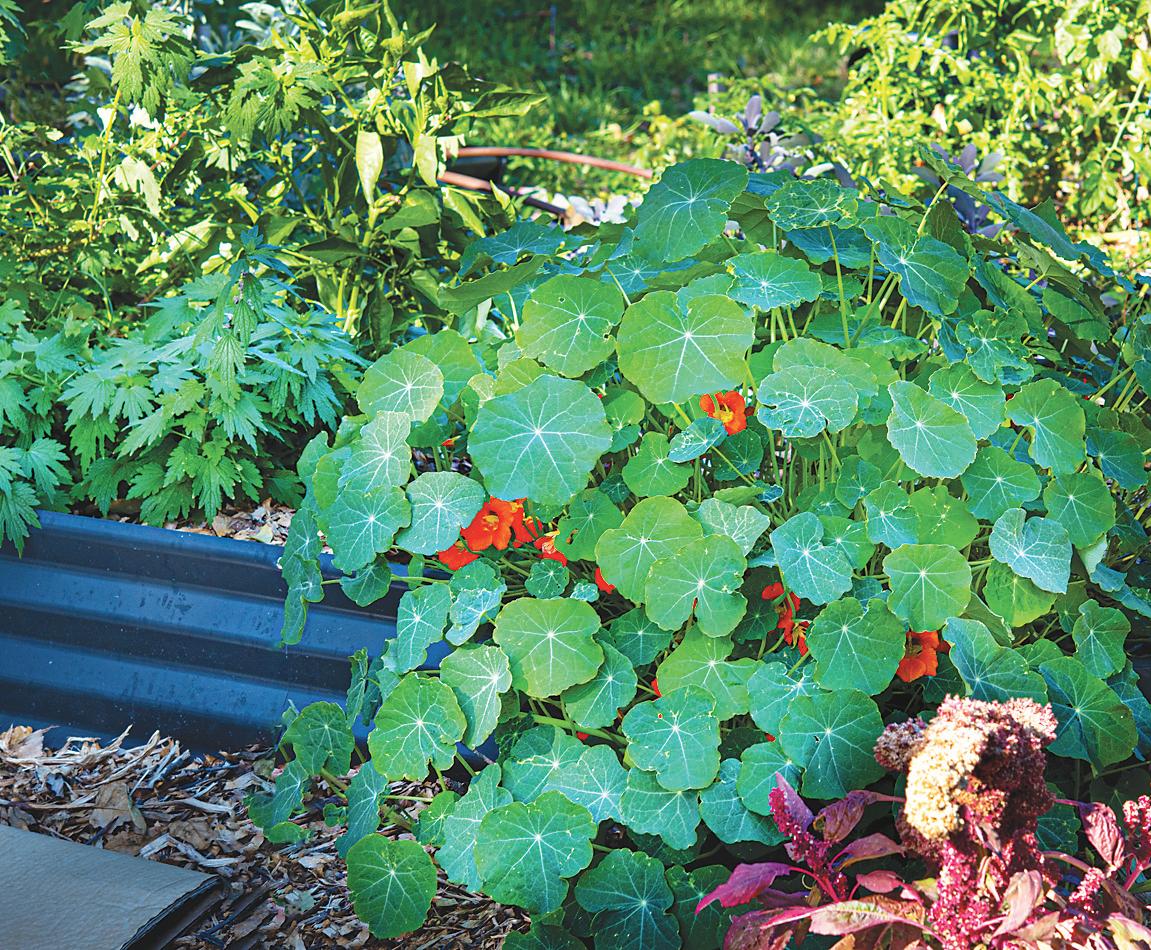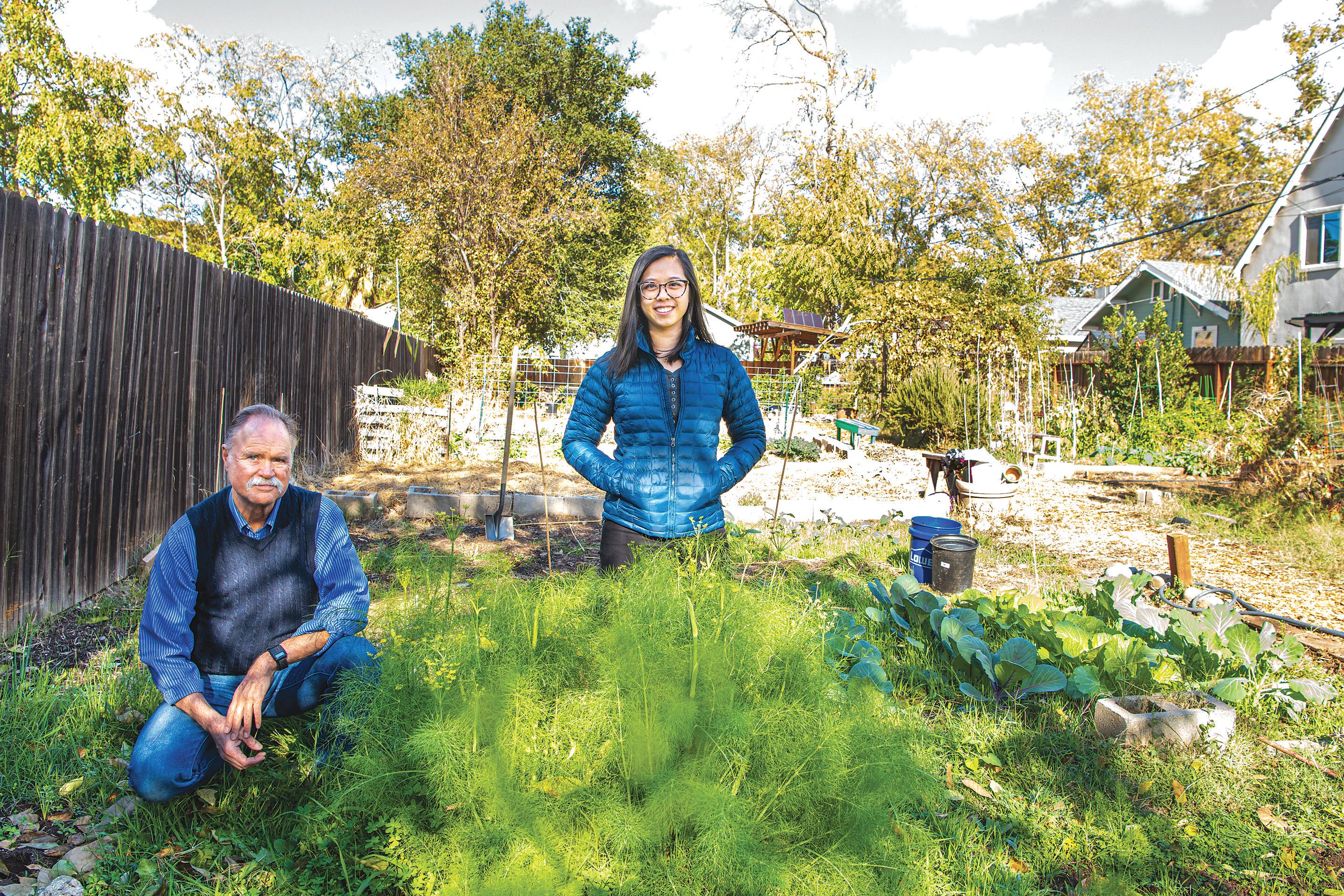
3 minute read
Farm To Fork
Lots of Potential Lots of Potential
Earl Withycombe and Amy Yang
URBAN AG PROGRAM HELPS EVERYONE WIN
Imagine a Sacramento where every few blocks community gardens fl ourish. Where we have access to the food bounty of our region. Where we can walk with our kids, parents or partners to harvest grapes, pomegranates, broccoli heads, mustard greens and basil tops.
In almost every neighborhood, a vacant and unimproved lot awaits cultivation. The ghosts of fi g trees whisper potential.
Fortunately, City Hall is ready to help. With the Urban Agriculture
GM GM
By Gabrielle Myers Photography by Aniko Kiezel Farm To Fork
Incentive Zone Program, the city lets property owners benefi t fi nancially and with community-minded spirit as they contribute to local nourishment.
For many reasons, including the high cost of construction, many lots sit empty for years. Amy Yang, associate planner with the city, says the Urban Ag program offers “an incentive to activate vacant spaces within the city, which may be especially appealing to landowners who are not yet ready to develop on them.”
The program is simple. Landowners must commit a parcel to agriculture for fi ve years. The county tax assessor replaces the assessed value with the average value of “irrigated” cropland in California. For 2023, the number is $18,100 per acre. A landowner can fi gure savings by using that number as a comparison with current property taxes.
While newer landowners benefi t most thanks to their higher assessed values, veteran property owners also benefi t.
“This program provides some leverage for urban farmers to approach landowners and make the case that landowners will save money if urban farmers are allowed to turn their vacant lot into a community garden or another type of urban agriculture,” Yang says.
A farmer can meet with the owner, get permission to farm and submit an application with simple documentation, such as a letter of agency and a contract.
Earl Withycombe, a community leader and one of the fi rst property owners to participate in this program, says owners benefi t in many ways. Withycombe turned his property into a hub for urban agriculture and community-minded investments with the Oak Park Sol Community Garden and Alchemist Microenterprise Academy and Kitchen Incubator Program.
He says the program “makes sense fi nancially and reduces maintenance costs.” With the land in use, he doesn’t have to clear trash every year or pay weed-abatement fees for fi re prevention.
One potential barrier is the requirement for a metered water connection or approved well on site. While the landowner could fi nd and perhaps revamp old connections, many vacant lots have never been inhabited
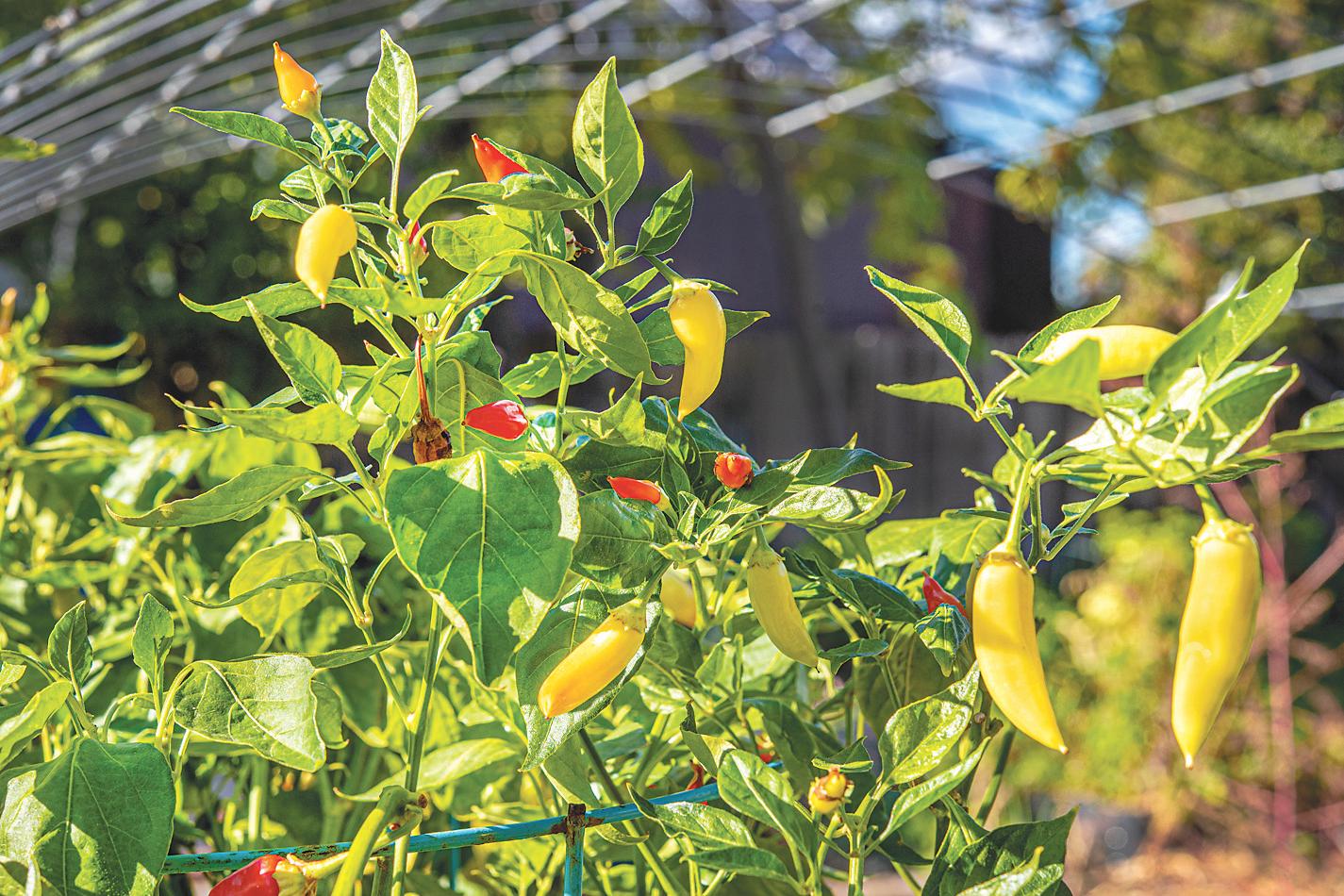


and don’t have water connections. The cost of installing a water line can range from $600 to $2,600 or more, depending on location.
Yang and her team are sensitive to the water challenge and “internal conversations are ongoing” on how to best address it, she says.
I’d love to see our community develop a fund in partnership with the city or independently to help pay for water connections. The health and vigor of our communities would pay us back many times.
Imagine the nourishment we can bring to residents and their children, regardless of socioeconomic situations. We all deserve access to our region’s cornucopia of fresh fruits and vegetables to nurture bodies and minds and contribute to a great city.
For information, visit cityofsacramento.org/community-development/ planning/long-range/urban-agriculture.
To determine the amount of tax incentives your property might qualify for, email the assessor’s offi ce at asr-agriculturalteam@saccounty.net.
Gabrielle Myers can be reached at gabriellemyers11@gmail.com. Her latest book of poetry, “Too Many Seeds,” can be ordered from fi shinglinepress.com. Previous columns can be found and shared at InsideSacramento.com. Follow us on Facebook, Twitter and Instagram: @insidesacramento. n
